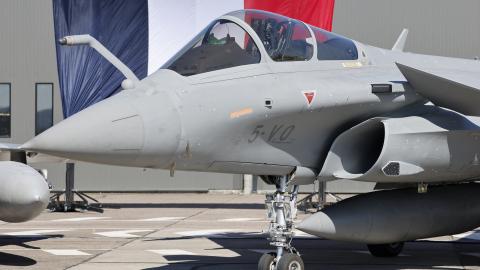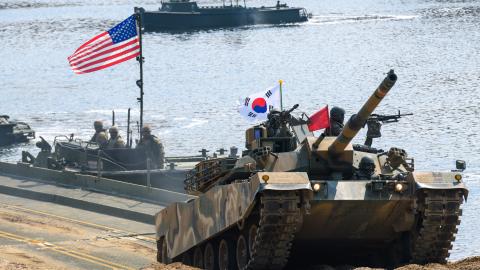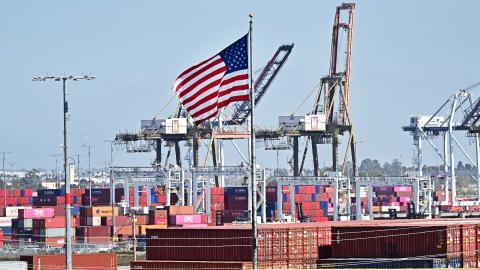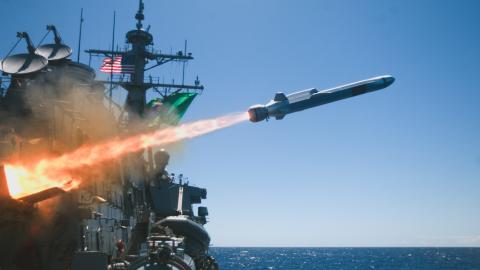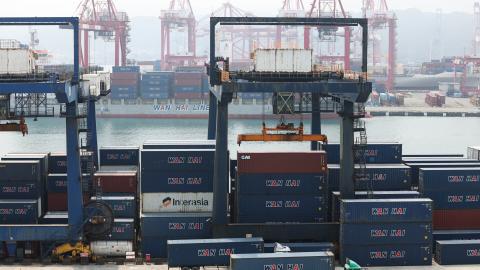Twenty twenty-five has so far been a whirlwind for US trade policy. On March 26, President Trump announced a new 25 percent tariff on auto, auto parts, and computer imports. On April 2, deemed “Liberation Day” by the administration, Trump announceda separate 32 percent tariff on all other imports from Taiwan. A week later, that 32 percent tariff was lowered to 10 percent for 90 days, to allow for trade negotiations.
Even as this article is being published there are new updates to US trade policy, like a recent exemption for computers, cell phones, and semiconductors from certain tariffs.
These actions have brought great uncertainty to global markets. Global markets have lost trillions of dollars since April 2, including significant losses for Taiwan’s stock exchanges. There are hopes that America’s trading partners, including Taiwan, can secure new “tailored” deals with the Trump Administration to avoid more tariffs. Taiwan President William Lai (賴清德) recently published an op-ed in Bloomberg Opinion that outlined his roadmap for deeper trade ties between Taiwan and the United States. It’s been reported that Taiwan may be one of the first countries with which the Trump Administration negotiates.
Unfortunately, trade negotiators from Taipei are looking at an uphill battle for dealing with the Trump Administration. Despite President Lai’s interest in negotiating a fairer Taiwan-US trade relationship, it’s still unclear what President Trump ultimately wants from other countries. In fact, Trump’s goals may be to have an unfair trade relationship that disproportionately favors the United States—a trade relationship that puts “America first.”
Taiwan and Trade
Trade is very important for Taiwan. Total trade (imports and exports) is valued well-over 100 percent of Taiwan’s gross domestic product (GDP). This contrasts with the United States: only 25 percent of US GDP is total trade. Taiwan also runs annual trade surpluses, meaning that it exports more than it imports.
Trade with the United States is also very important for Taiwan, as the United States is the largest single destination for Taiwan exports. In 2024, Taiwan exported over USD $111 billion worth of goods to the United States, accounting for 23 percent of Taiwan’s total exports. The majority of these goods were computers, computer accessories, and semiconductors.
Unfortunately, the United States runs a trade in goods deficit with Taiwan. The goods deficit in 2024 was valued at USD $73.7 billion, a 56 percent increase from the 2023 trade deficit of USD $47.3 billion. This has more to do with high demand for products made in Taiwan, and less to do with the differences in trade barriers between the United States and Taiwan.
Figure 1: Taiwan’s Major Export Markets
|
2024 exports from Taiwan (destination) |
Total value (billions) |
Percent of total |
|
United States |
$111.4 |
23.4% |
|
China |
$97.0 |
20.4% |
|
Hong Kong |
$53.6 |
11.3% |
|
Singapore |
$33.7 |
7.1% |
|
Japan |
$25.8 |
5.4% |
|
Republic of Korea |
$20.8 |
4.4% |
|
Malaysia |
$19.9 |
4.2% |
|
Viet Nam |
$14.3 |
3.0% |
|
Thailand |
$11.8 |
2.5% |
|
Netherlands |
$9.7 |
2.0% |
|
Mexico |
$7.9 |
1.7% |
|
India |
$7.9 |
1.7% |
|
Rest of world |
$61.2 |
12.9% |
|
Total |
$475.0 |
100% |
|
Source: Customs Administration, Ministry of Finance, ROC |
||
Like most other developed economies, Taiwan has very few tariffs on imports. Its average tariff rate is 4 percent for industrial products and 15 percent for agricultural products, with a total average tariff rate of 6.4 percent. Still, it should have come as no surprise when President Trump—who has long articulated his dislike for trade deficits—took action against Taiwan and other countries with which the United States has persistent trade deficits. And so, on April 2 he announced a 32 percent tariff on all imports from Taiwan, based largely on the trade deficit in goods.
Thankfully, either because of market backlash or because more than 75 countries came forward to express willingness to negotiate, Trump announced a week later his plan to pause this new round of higher tariffs—while keeping in place a 10 percent tariff for the next 90 days. 10 percent would still be much higher than the roughly 3 percent average tariff the United States has applied to imports for the last decade.
The new 10 percent tariff will also exclude pre-existing tariffs, such as the 25 percent tariffs on aluminum, automobiles, automobile parts, computers, steel, and any other future national security-related tariffs. Meanwhile, the tariff on goods from China has increased to over 100 percent.
In the hopes of striking a deal for Taiwan, President Lai recently published an opinion piece outlining his five core principles for trade negotiations with the Trump Administration:
- Removing all tariffs on Taiwan-US trade;
- Offsetting the trade imbalance by purchasing more US agriculture, defense, energy, and industrial goods;
- Establishing a “US Investment Team” to support new investment in the United States;
- Removing non-tariff barriers to trade;
- And, addressing US concerns regarding export control and transshipment.
The Challenges of Negotiations
Despite their willingness to negotiate a deal with the Trump administration, the Lai Administration is going to face some serious challenges. Many of these challenges are political, but some of them are simply bureaucratic. The first challenge is that no one truly knows what Trump wants from each country. A good assumption is that not only does Trump want to decrease the trade deficits the United States has with many countries, but he may also want the United States to run trade surpluses. On this point, Lai’s recent article is at least going in the right direction.
The second challenge is whether such a deal is even possible within the next 90 days. Yes, Trump could extend the 90-day period, but that is not guaranteed. It is also unclear how long these negotiations will last. The Trump team may demand an expediency that Lai and his team cannot deliver, given political constraints at home. It is a little easier for countries like Japan and South Korea to negotiate, as Japanese Prime Minister Shigeru Ishiba or South Korean acting-President Han Duck-soo can call Trump directly to talk about negotiations. But for President Lai, who cannot call Trump, he has to rely on his team and hope that any deal they negotiate is good enough for Trump.
Third, it’s uncertain what the terms of any agreement will look like. Leaders like Lai will want guarantees that tariffs will not come back in six or 12 months; however, Trump is unlikely to make such a commitment. From the start, any agreement may simply be a memorandum of understanding between the two governments. But American officials may look to ensure their terms persist, and will want legislative action in both the United States and abroad to formalize any agreement. Again, this is a challenge for Lai, whose party does not hold the majority in Taiwan’s legislative body.
It will be interesting to compare any agreement between the US and Taiwan in the near future with the US-Taiwan 21st Century Trade Initiative. The “21st Initiative” has essentially been slow progress towards a US-Taiwan bilateral trade agreement. These negotiations slowed last year, most likely due to the approaching US presidential election.
Unlike the current situation in US trade policy—where much of the US Congress is allowing the Trump Administration to act without Congressional consultation—over the preceding year Congress demanded to play a role in US-Taiwan trade negotiations. However, there is now a different administration in the White House and a different Congress. Accordingly, Congress may be less interested in weighing in on US-Taiwan trade negotiations than before.
A final, and possibly bigger, challenge for Taiwan is the national security (Section 232 specific) tariffs. This includes 25 percent tariffs on automobiles. Currently, Taiwan is not a large source for America’s automobile and automobile part imports: in 2024, the United States imported roughly USD $3.7 billion worth of these goods from Taiwan, most of which were various parts and accessories.
However, the Section 232 notice also includes HS8471, which is a general code for all computers and data processing machines. Last year, HS8471 imports from Taiwan were valued at USD $26 billion, or 22 percent of all imports from Taiwan, according to US government statistics. It is unclear what the fate of these tariffs may be. The Trump Administration has also threatened tariffs on semiconductor imports. Imports of semiconductors were over USD $15 billion, or 13 percent of all imports from Taiwan.
As we have seen with other Section 232 tariffs, there have not been any exemptions from these tariffs for trade partners and allies. These tariffs also operate separately from the reciprocal 10 percent tariff. This means that, even if Taiwan can negotiate to keep the reciprocal tariff rate at 10 percent and not 32 percent, they might not be able to negotiate the 25 percent Section 232 tariff.
Trade Uncertainties Beyond Taiwan
Whether Taiwan is successful in negotiating a deal with the Trump Administration or not, Taiwan still sends many of its exports to other countries in Asia. This means that unless other countries are also successful negotiating with the Trump Administration, there may be increased costs for Taiwan’s exporters.
China is the second largest destination for Taiwan’s exports. Many of these exports (like semiconductors) continue on to America after being put in new cell phones, computers and laptops, or other technologies. As the US-China trade war increases in severity, this will become more of a challenge for Taiwan’s multinational companies.
We have seen Taiwanese manufacturing leave China over the last eight years in part because of Trump’s first tariffs on China. Some of that manufacturing has returned to Taiwan, but a lot of it has also gone to emerging markets like southeast Asia. However, many Taiwanese firms still have a significant reliance on China for manufacturing, meaning that Taiwan will not go unharmed from the uncertainties of the new US-China trade war.
The main point: US-Taiwan trade negotiations are going to be difficult: not just because of the diplomatic restrictions on Washington-Taipei communications, but also because of the nature of the tariffs the Trump Administration is applying. A 10 percent tariff rate is better than a 32 percent tariff, but both are still higher than the average 3 percent the US applied up until recently. Hopefully, a deal can be made to avoid large reciprocal tariffs. However, there are also 25 percent tariffs on auto and computer imports from Taiwan which may not be negotiable. There could also be tariffs on semiconductor imports soon. This will result in large costs: not just for Taiwanese exporters, but also for American consumers reliant on Taiwan’s manufacturing in information technologies.
